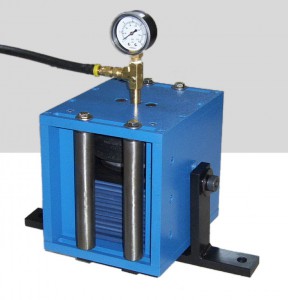In a winding process, the type of coil used plays an important role to control traversing and wire tension. Generally, copper coils or wires are round or rectangular in shape. Among these two, rectangular wires require more attention during the winding process. This is discussed in detail below.
The Case with Rectangular Coils
The coil winding process involves placing a great amount of tension on the wire using a coil winding tensioner. The quality of tension is based primarily on the shape of the coil. On comparing round and rectangular coils, you will find that the latter are tougher to wind:
- In a single wind, the amount of tension applied to round coils does not vary. In the case of rectangular coils, the shape of the coil and rectangular bobbins create fluctuations in a single wind.
- Coils are wound at high speeds. Round coils have a fixed point of contact, and therefore there is no change in terms of speed. With rectangular coils, the speed of rectangular wires has to be controlled since the wire path and length is constantly changing. Also, there is a huge possibility of wire crossovers.
- The changing tension in the wire path and length, leads to extra load on the machine traverse. It also causes the main shaft to vary, which results in excessive force and vibrations in the machine. These factors will result in variations in the final coil. All these results require an immense amount of time and money to fix.
Why do These Problems Occur?
The basic design of many tensioning devices consists of a braked pulley. The wire is wrapped around it, and the pulley is used to transfer tension onto the wire. Generally, electric motors or magnetic brakes are used to control this transfer process. Tensioners with electric motors are not able to compensate for the fluctuations created by the rectangular bobbins.
Solutions for Rectangular Coil Winding
To ensure that rectangular coil winding can be completed adequately, there are certain points that need to be kept in mind:
- Tensioners should be designed to accommodate a variety of wire sizes.
- The coil winding tensioner should be able to adjust to different tension settings.
- It should be easy to install and operate.
- It should be capable of operating at high speeds.
- It needs to be compatible with existing winding machines.
It is important to have a comprehensive understanding of the different types of coils and how tensioning devices affect the winding process. This can help manufacturers create coil winding tensioners that can solve critical issues.
